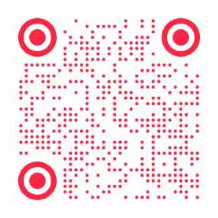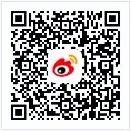
Medical device knowledge how much medical diagnosis and monitoring equipment
Release time:
2023-12-28
electroencephalogram machine
The cerebral cortex is made up of hundreds of millions of neurons. Neurons, like other cells in the human body, have bioelectrical activity. Under normal circumstances, the amplitude of EEG signals guided on the scalp is 10~100 μV peak (while the potential change guided from the cerebral cortex can reach 1mV), and its frequency range is from less than 1Hz to 50Hz. The waveform varies according to the brain position, and is related to the level of wakefulness and sleep, and there are great individual differences.
The device that measures and records the electrical activity of the brain is called an EEG machine, which can be used to trace the electrical activity curve of the two hemispheres of the brain-EEG, which is used for clinical diagnosis and neurophysiological research.
Conductor connection design
Electroencephalography electrodes can be connected in unipolar or bipolar lead mode.
Unipolar lead method is a method that consists of an active electrode placed on the scalp and a neutral electrode (usually two ears are taken as neutral electrodes) that is as far away as possible from the brain tissue area to be examined. Usually, only the potential change from a single active electrode is recorded, so it is called unipolar lead. When an abnormal waveform and frequency is recorded somewhere, it should be considered that the area may be a lesion. The amplitude recorded by this connection method is higher, the detection depth is deeper, and the abnormal brain electrical activity is easy to find, but the interference is large.
Bipolar lead method is a method of recording two active electrodes on the scalp respectively connected to the two positive and negative input terminals of the differential amplifier, and the potential difference between the two active electrodes is recorded. Adjacent electrodes can be connected vertically or horizontally. Generally, the front (or left) electrode is connected to the positive end of the amplifier, and the rear (or right) electrode is connected to the negative end of the amplifier. Bipolar recording should have at least one front-rear series connection and one horizontal series connection. Due to the short distance, this connection has less interference and accurate positioning, but lower amplitude.
Analysis of EEG
EEG is composed of different frequencies, different amplitudes and different forms of brain waves. The characteristics of EEG are closely related to the degree of activity of the cerebral cortex. In some normal mental states (different levels of consciousness) and pathological conditions (such as epilepsy), fixed forms of EEG signals can be seen.
As far as normal adults are concerned, the waveform, amplitude, frequency and bit equality of EEG have universal laws. Clinically, the waveform is divided into four kinds: α wave, β wave, θ wave and δ wave according to its frequency.
Composition of EEG machine
The device for measuring EEG is called EEG machine, which can be used to trace the electrical activity curve of the two hemispheres of the brain, that is, EEG, for clinical diagnosis and neurophysiological research, such as the diagnosis of intracranial space-occupying lesions, epilepsy and aviation neurophysiological research. The EEG machine is usually composed of 8 or 16 channels, which can record multiple EEG signals at the same time.
Taking the 8-channel EEG machine as an example, it is usually composed of electrode switch selector, EEG amplifier, signal conditioning and EEG recording. The human brain electrical signal is extracted from the scalp electrode and input to the electrode switch selector. The function of the electrode switch selector is to select the connection of the electrode lead (double/single pole) and exchange the electrodes of the left and right hemispheres. The 8-channel EEG signals are simultaneously sent to the 8-channel preamplifier for amplification, and then adjusted by the signal conditioner for signal filtering, interference suppression, gain control, etc., and then the 8-channel main amplifier amplifies and outputs the EEG signals. The EEG machine can also usually generate periodic sound and light signals to stimulate the patient's ears and eyes. Evoked potentials are obtained from the scalp surface of the stimulated patient to determine whether the auditory and visual nerve functions are normal or not.
At present, the EEG signal has appeared paperless trend, digital EEG machine greatly simplifies the test process. The EEG signal is amplified to a suitable voltage, and then sent to the microcomputer system after A/D conversion. The digitized EEG signal can be stored and saved for automatic analysis, measurement, post-processing and graphical output of various parameters.
The digital EEG machine adopts microprocessor control technology, which can realize human-computer interaction and automatic measurement control and other functions, such as receiving key commands to achieve the corresponding lead switching, amplifier gain control, record storage mode selection, filter frequency selection and other basic functions. In addition, through the relevant software can also achieve automatic measurement, automatic analysis of EEG signals and other functions, to provide more reference information for the doctor's diagnosis.
Previous:
Related News









